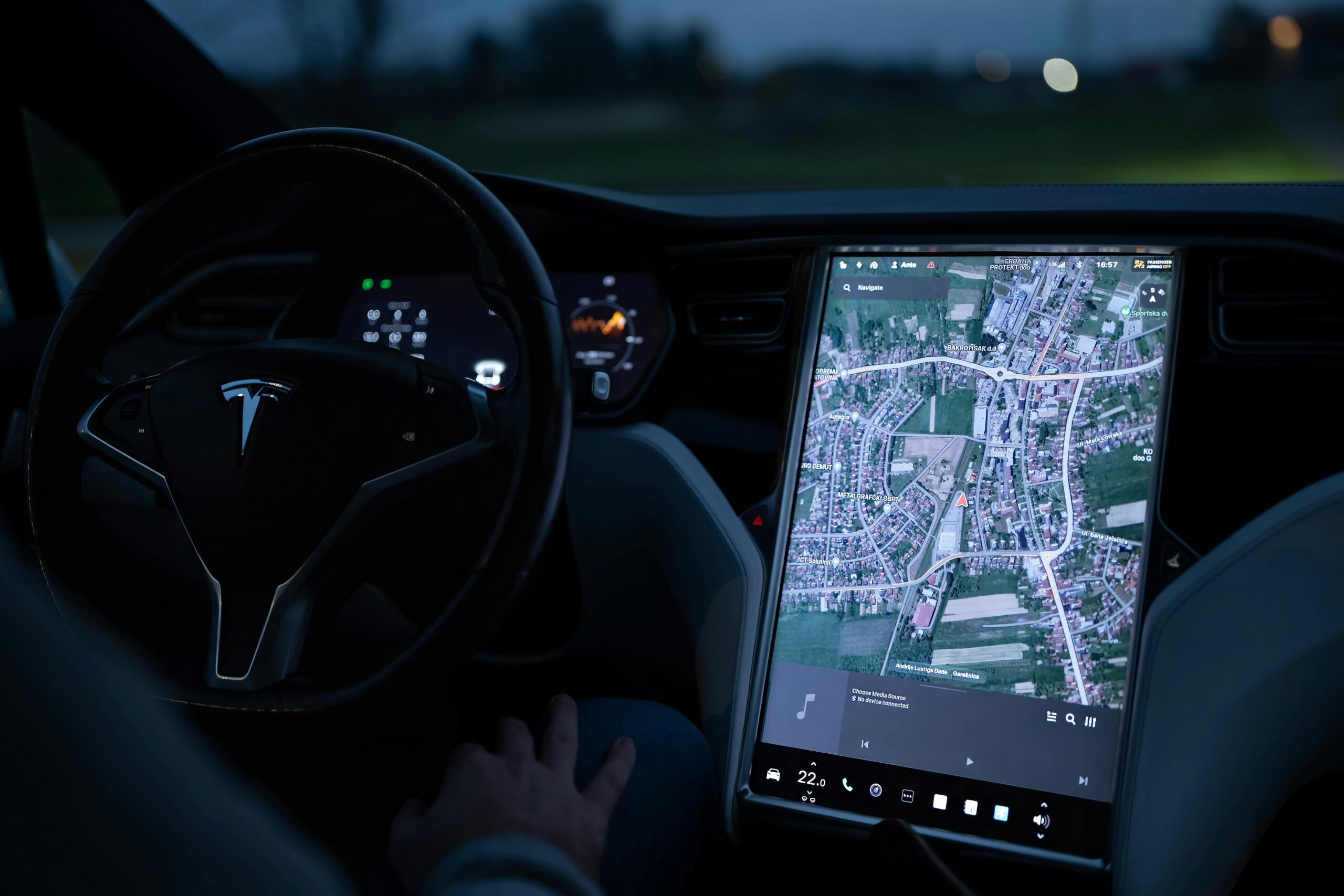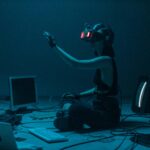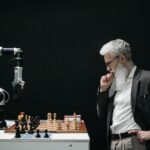Contents
- 1 Exploring the Future: The New Tech of Tesla Robot
- 2 Intro
- 3 Unveiling the Tesla Robot: An Introduction
- 4 The Design and Technology Behind the Tesla Robot
- 5 How the Tesla Robot Could Change the Workplace
- 6 The Tesla Robot and Daily Life: A Glimpse into the Future
- 7 Addressing the Ethical and Social Implications
- 8 The Road Ahead: Challenges and Opportunities
Exploring the Future: The New Tech of Tesla Robot
Intro
Tesla Robot know as new teck; The future is here, and it comes in the form of the highly anticipated Tesla Robot. This revolutionary new technology has been making waves in the tech world, promising to change the way we live and work. Developed by the innovative minds at Tesla, this humanoid robot is designed to handle a variety of tasks and assist humans in daily activities. With its sleek design and advanced capabilities, the Tesla Robot is set to take automation to a whole new level. In this blog post, we will delve into the exciting features of this new tech and explore the endless possibilities it brings. So buckle up and get ready to discover the incredible world of the Tesla Robot.
Unveiling the Tesla Robot: An Introduction
The unveiling of the Tesla Robot marks a significant milestone in the field of robotics and automation. Announced with much fanfare, this humanoid machine represents the culmination of years of research and development by Tesla. Unlike traditional robots confined to repetitive tasks, the Tesla Robot is equipped with the ability to perform complex and nuanced tasks, mimicking human actions. Its introduction to the public was met with awe and curiosity, as it showcased not just a leap in technology but a vision of the future where humans and robots collaborate more seamlessly. With its advanced sensors, AI, and machine learning capabilities, the Tesla Robot is designed to understand and navigate the human environment, making it a versatile tool in both the workplace and home. Tesla’s foray into robotics highlights the company’s commitment to innovation and its belief in the potential of robots to enhance human productivity and safety. As we stand on the brink of this new era, the Tesla Robot is a harbinger of the exciting technological advancements that lie ahead.
The Design and Technology Behind the Tesla Robot
At the heart of the Tesla Robot’s innovation is its cutting-edge design and technology. Engineered for versatility and efficiency, this humanoid is constructed with lightweight materials, allowing for fluid movement and dexterity that mimic human motion. Its sleek, futuristic exterior houses an array of sensors and cameras, enabling it to perceive its surroundings with remarkable accuracy. Central to its operation is an advanced artificial intelligence system, powered by Tesla’s proprietary algorithms. This AI empowers the robot to learn from its interactions, adapt to new tasks, and make autonomous decisions in real-time. Furthermore, the integration of machine learning capabilities ensures that the Tesla Robot can improve its performance over time, becoming more efficient in executing tasks. The robot’s design also emphasizes safety, featuring mechanisms that allow it to detect and avoid obstacles, preventing accidents in both industrial and domestic settings. By leveraging Tesla’s expertise in electric vehicles, the robot is equipped with a high-capacity battery, offering extended operation times. This blend of innovative design and cutting-edge technology positions the Tesla Robot as a significant leap forward in the field of robotics, paving the way for a new era of human-robot collaboration.
How the Tesla Robot Could Change the Workplace
The introduction of the Tesla Robot into the workplace heralds a transformative shift in how businesses operate. This humanoid robot, with its advanced AI and ability to perform complex tasks, is poised to revolutionize industries by taking on roles traditionally reserved for humans. In manufacturing, for instance, it can carry out precise assembly tasks with greater efficiency and fewer errors, reducing production downtime and increasing overall output. In the service sector, the Tesla Robot could handle customer inquiries, manage inventory, and even provide support in logistics, showcasing its versatility beyond mere manual labor. Its integration into the workforce is expected to boost productivity, allowing human employees to focus on more strategic and creative tasks that require emotional intelligence and nuanced judgment. Additionally, its deployment in hazardous environments, such as chemical plants or construction sites, could significantly enhance worker safety by performing risky tasks, thus minimizing the likelihood of accidents. By automating routine and dangerous work, the Tesla Robot could not only redefine job roles but also open up new opportunities for human workers to engage in more fulfilling and intellectually stimulating work, marking a pivotal step in the evolution of the workplace.
The Tesla Robot and Daily Life: A Glimpse into the Future
Imagine a future where your morning starts with a gentle nudge from a robotic companion programmed to align with your schedule. The Tesla Robot, with its advanced capabilities, is poised to revolutionize the way we handle daily routines, from the simplicity of household chores to the complex management of our personal schedules. Picture this humanoid robot brewing your morning coffee with precision, reminding you of your day’s appointments, and even assisting with physical exercises, all while ensuring that your home remains organized and efficient. Its ability to interact and adapt to human needs could redefine companionship, offering assistance and even learning to anticipate the needs of its human counterparts. In elder care, the Tesla Robot could provide invaluable support, assisting with mobility, medication management, and social interaction, thereby enhancing the quality of life and independence for many. While the prospect of integrating robots into our daily lives may seem daunting, the Tesla Robot represents a step towards a future where technology and humanity blend seamlessly, enriching our everyday experiences with a touch of the extraordinary.
As the Tesla Robot begins to integrate into workplaces and homes, it inevitably raises ethical and social questions that must be considered. One primary concern is the potential for job displacement as robots take on tasks traditionally performed by humans. This shift prompts a broader discussion about the future of employment and the need for societies to adapt, potentially through re-skilling programs or shifts in educational focus. Another significant aspect revolves around privacy and security; as robots collect data to learn and adapt to human environments, the handling and protection of this information become paramount. Additionally, the development of such advanced AI technology leads to questions about autonomy and the moral responsibilities of creating machines capable of making decisions. Ensuring that robots like the Tesla Robot are designed with ethical guidelines that prioritize human safety and dignity is essential. These considerations underscore the importance of a collaborative approach between technologists, ethicists, and policymakers to navigate the complexities of introducing humanoid robots into daily life, ensuring that the benefits are maximized while minimizing potential harms and societal disruptions.
The Road Ahead: Challenges and Opportunities
As we forge ahead into the era of humanoid robotics, led by innovations like the Tesla Robot, we encounter a landscape brimming with both challenges and opportunities. Key challenges include technical hurdles, such as enhancing the robot’s ability to interact with an unpredictable world and ensuring robust cybersecurity measures to protect against potential hacking threats. Furthermore, there’s the challenge of public acceptance, ensuring that society is ready to embrace robots as part of daily life and the workforce. On the flip side, the opportunities are vast. The Tesla Robot represents a stepping stone towards significant advancements in healthcare, where robots could provide companionship and care for the elderly or disabled, and in disaster response, where they can be deployed in dangerous environments inaccessible to human responders. Moreover, this technological leap opens up new avenues for innovation in education, entertainment, and personal assistance, setting the stage for a future where humanoid robots could become as commonplace as smartphones. Navigating this road will require a concerted effort from developers, regulators, and the public to address challenges head-on while unlocking the full potential of this promising technology.


